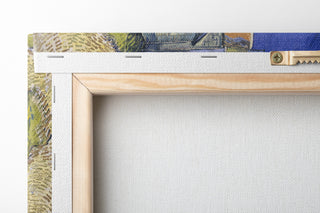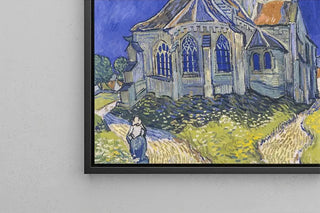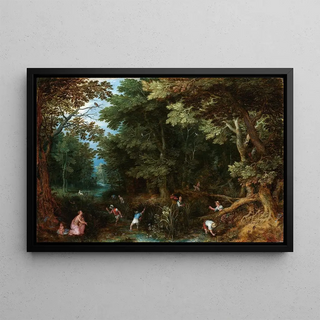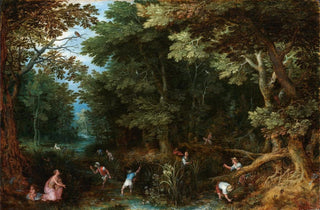Latone and the Lycian Peasants - Jan Brueghel the Younger | Art print


View from behind

Frame (optional)
Latone and the Lycian Peasants: a scene of life imbued with tenderness
In this captivating artwork, Latone and the Lycian peasants, the composition unfolds with delicate harmony. The pastel colors, blending shades of soft green and sky blue, create a peaceful, almost idyllic atmosphere. The technique used, likely oil on canvas, allows for the rendering of facial details and gestures with remarkable finesse. The peasants, at the center of the scene, seem to be in full interaction with the goddess Latone, evoking a moment of sharing and mutual respect. This representation invites contemplation of a time when nature and humanity coexisted in perfect symbiosis.
Latona and The Lycian Peasants: a reflection of neoclassical art
Latona, a little-known artist, aligns with the neoclassical movement that marked the late 18th century and early 19th century. This style, characterized by a return to classical forms and mythology, draws inspiration from the works of ancient masters. Latona, influenced by artists such as Jacques-Louis David, seeks to convey moral values through her paintings. The artwork Latone and the Lycian peasants demonstrates this desire to depict mythological scenes while incorporating elements of everyday life. This blend of genres emphasizes the importance of harmony between man and nature, a central theme of her era.
A decorative acquisition with multiple assets
The art print of Latone and the Lycian peasants makes an ideal decorative choice for various spaces, such as the living room, office, or even the bedroom. Its print quality and fidelity to the original colors make it an attractive piece that will capture attention. By integrating this artwork into your interior, you bring a touch of elegance and serenity, while enriching your decor with a meaningful piece. This canvas, with its soothing atmosphere, invites daydreaming and contemplation, turning each glance into a moment of escape.

Matte finish

View from behind

Frame (optional)
Latone and the Lycian Peasants: a scene of life imbued with tenderness
In this captivating artwork, Latone and the Lycian peasants, the composition unfolds with delicate harmony. The pastel colors, blending shades of soft green and sky blue, create a peaceful, almost idyllic atmosphere. The technique used, likely oil on canvas, allows for the rendering of facial details and gestures with remarkable finesse. The peasants, at the center of the scene, seem to be in full interaction with the goddess Latone, evoking a moment of sharing and mutual respect. This representation invites contemplation of a time when nature and humanity coexisted in perfect symbiosis.
Latona and The Lycian Peasants: a reflection of neoclassical art
Latona, a little-known artist, aligns with the neoclassical movement that marked the late 18th century and early 19th century. This style, characterized by a return to classical forms and mythology, draws inspiration from the works of ancient masters. Latona, influenced by artists such as Jacques-Louis David, seeks to convey moral values through her paintings. The artwork Latone and the Lycian peasants demonstrates this desire to depict mythological scenes while incorporating elements of everyday life. This blend of genres emphasizes the importance of harmony between man and nature, a central theme of her era.
A decorative acquisition with multiple assets
The art print of Latone and the Lycian peasants makes an ideal decorative choice for various spaces, such as the living room, office, or even the bedroom. Its print quality and fidelity to the original colors make it an attractive piece that will capture attention. By integrating this artwork into your interior, you bring a touch of elegance and serenity, while enriching your decor with a meaningful piece. This canvas, with its soothing atmosphere, invites daydreaming and contemplation, turning each glance into a moment of escape.






